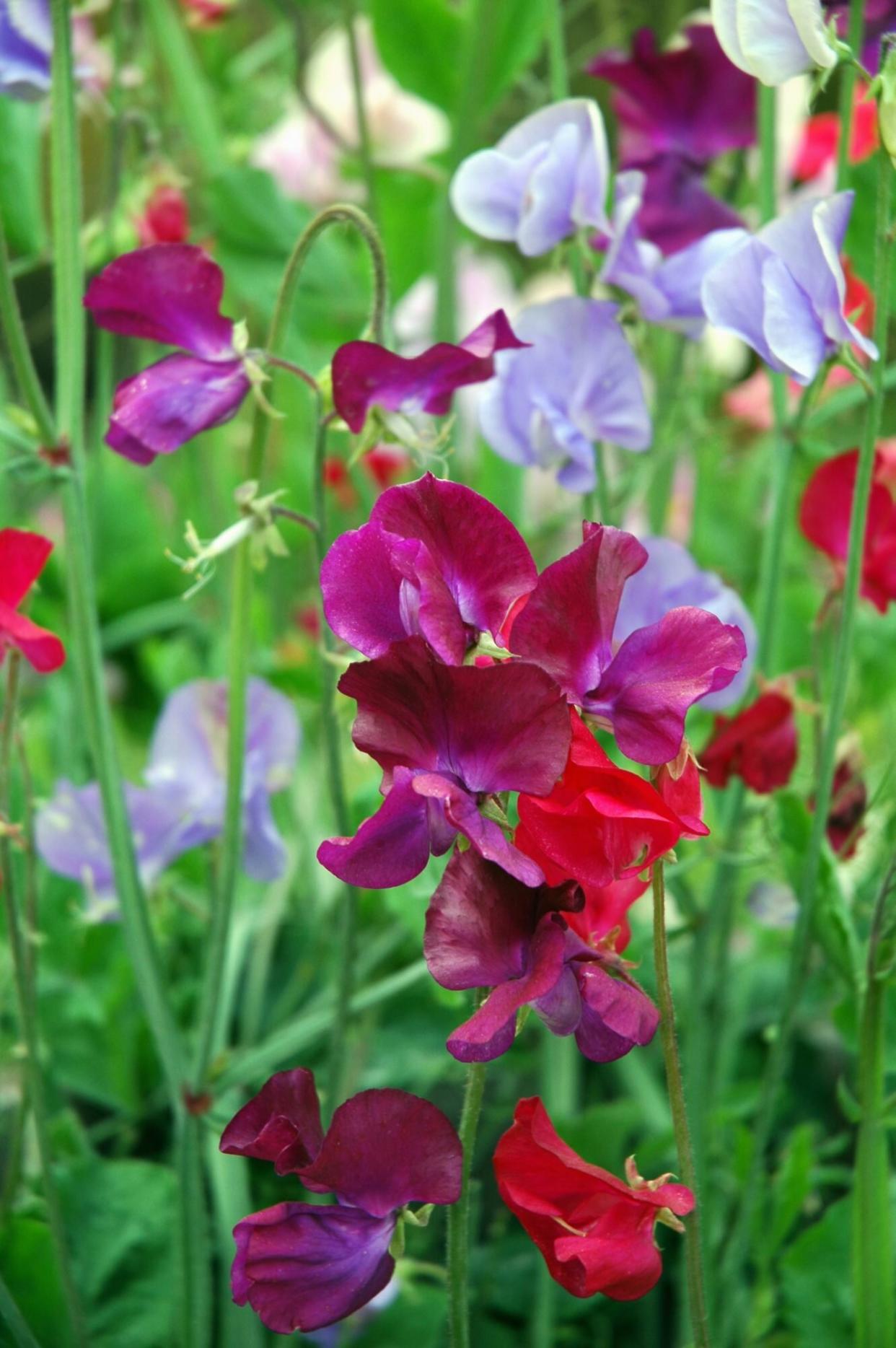How to Plant and Care for Sweet Pea Flowers

Getty Images
TABLE OF CONTENTS
On This Page
How to Plant Sweet Peas
Sweet Pea Care
Sweet Pea Varieties and Cultivars
How to Prune Sweet Peas
Common Problems with Sweet Peas
Ornamental sweet peas have been around for centuries, long enough to be considered old-fashioned, but these delicate-looking flowers are still popular. Sweet peas (Lathyrus odoratus) are climbing vines with curling tendrils and clusters of dainty flowers. Look for them in crimson, apricot, violet, rose, white, pink, blue, and other colors. Some gardeners think they smell like orange blossoms, honey, and jasmine. Others say they have a grapelike scent. Let them twine over an arbor, spill out of window boxes, or delight as clippings in bouquets. Sweet peas are deer resistant, but butterflies and bees love them.
How to Plant Sweet Peas
Sweet peas are easy-to-grow, hardy annuals. If you live in USDA Zone 7 or warmer, plant them outdoors in late fall. Elsewhere, plant them from late winter to very early spring. The seedlings can survive a light frost.
Indoors, sow sweet pea seeds four to six weeks before your average last frost. Some can take a long time to germinate. Soak them overnight in water to soften their hard seed coats or scuff them with sandpaper. Then plant two or three seeds per pot in biodegradable pots of fresh potting mix. Cover the pots with clear plastic bags to create mini-greenhouses and keep them in a cool, bright spot in your house. When the seedlings are up, remove all but one in each pot. Two weeks before the last spring frost, transplant the pots directly into the garden or outdoor containers so you won't disturb the long tap roots.
Pinch the growing tips when the seedlings are about 4 inches tall, so they'll form side shoots. Plant them in rows, 6 to 8 inches apart, in a spot that gets partial sun. You should see blooms in 4 to 6 weeks after the vines start growing.
Sweet Pea Care
Soil
Sweet peas need well-draining, humus-rich soil with a neutral to alkaline pH. Mix in compost to amend your soil, if needed. For best results, amend the soil in the fall before planting.
Support
Support sweet peas in the garden with netting, twine, or trellises that are anchored so the fast-growing vines won't pull them down.
Mulch, Water, and Fertilizer
Mulch sweet peas to help hold moisture in the soil and keep their roots cool. Water regularly if rainfall isn't sufficient. Fertilize with a liquid fertilizer every couple of weeks or as directed on your product's label.
Sweet Peas in Containers
Sweet peas grown in containers also need something to climb. Choose short varieties, so you won't need tall supports, and containers at least 6 inches deep filled with good potting mix. Pinch the seedlings' growing tips when they're 4 inches tall. Otherwise, caring for sweet peas in containers is basically the same as caring for sweet peas outdoors, although you may need to water more often.
Sweet Pea Varieties and Cultivars
Look for dwarf varieties for containers, beds, or borders.
'Henry Eckford'
This heirloom with orange-red to salmon flowers dates to 1904.
'Old Spice'
Choose this mix of colors for its honey and orange blossom perfume.
'Cupani's Original'
Sweet peas like cool weather, but some tolerate more heat than others, like this purple and blue bicolor.
'Strawberry Sundae'
Highly fragrant flowers in pastel pink, rose, and white.
'Flora Norton'
These soft blue flowers are wonderful for cutting. Vines grow to 6 feet.
Bijou Mix
These short, bushy sweet peas are a mix of lavender, pink, purple, blue, and white.
'Sugar and Spice'
Enjoy these solid and bicolored blooms, held on dwarf plants, in hanging baskets. At 7 inches tall and wide, they don't need pinching.
'Cupid Pink'
White and pink bicolored flowers bloom on this dwarf plant.
Spencer cultivars
Some of these cultivars lack strong perfumes, but they have big, ruffled blooms with long stems for cutting.
How to Prune Sweet Peas
Other than pinching, sweet peas don't need much pruning. Deadhead them often and remove dead or dying leaves.
Sweet pea vines die naturally when the temperatures rise. Pull and compost them if they're not diseased or infested with pests.
If your sweet pea plant is too tall, cut off the top of the primary vine just above a shoot or bud.
Common Problems with Sweet Peas
Bud Drop
Sweet peas sometimes drop their buds when they get too dry or nighttime temperatures fall below 30 degrees Fahrenheit. Cut off buds that threaten to drop at the base of their stems so the plants can keep growing. Overfertilizing can also cause bud drop. Stop feeding until the flowers open completely.
Not Enough Buds
Too much nitrogen can promote leaves instead of flowers. Switch to a tomato fertilizer if your product seems to contain too much.
Pests and Diseases
Pests like aphids, leaf miner, spider mites, and thrips can attack sweet peas, along with slugs and snails. Try knocking off pests with a strong stream of water from your hose. Keep sweet peas weeded, so pests can't hide nearby. When possible, spray with insecticidal soap or neem oil to get rid of pests, rather than chemicals. Use snail or slug baits or traps.
Possible diseases include downy mildew, leaf spot, rust, virus diseases, root and crown rot, and rust. Remove heavily infested or diseased foliage to keep problems from spreading. Help prevent diseases and rotting by giving plants good air circulation. Water with drip irrigation or soaker hoses to keep foliage dry. If diseases persist, look for a fungicide labeled for your specific problem.
Toxicity
All parts of sweet peas are toxic to people and animals, so don't eat them.

